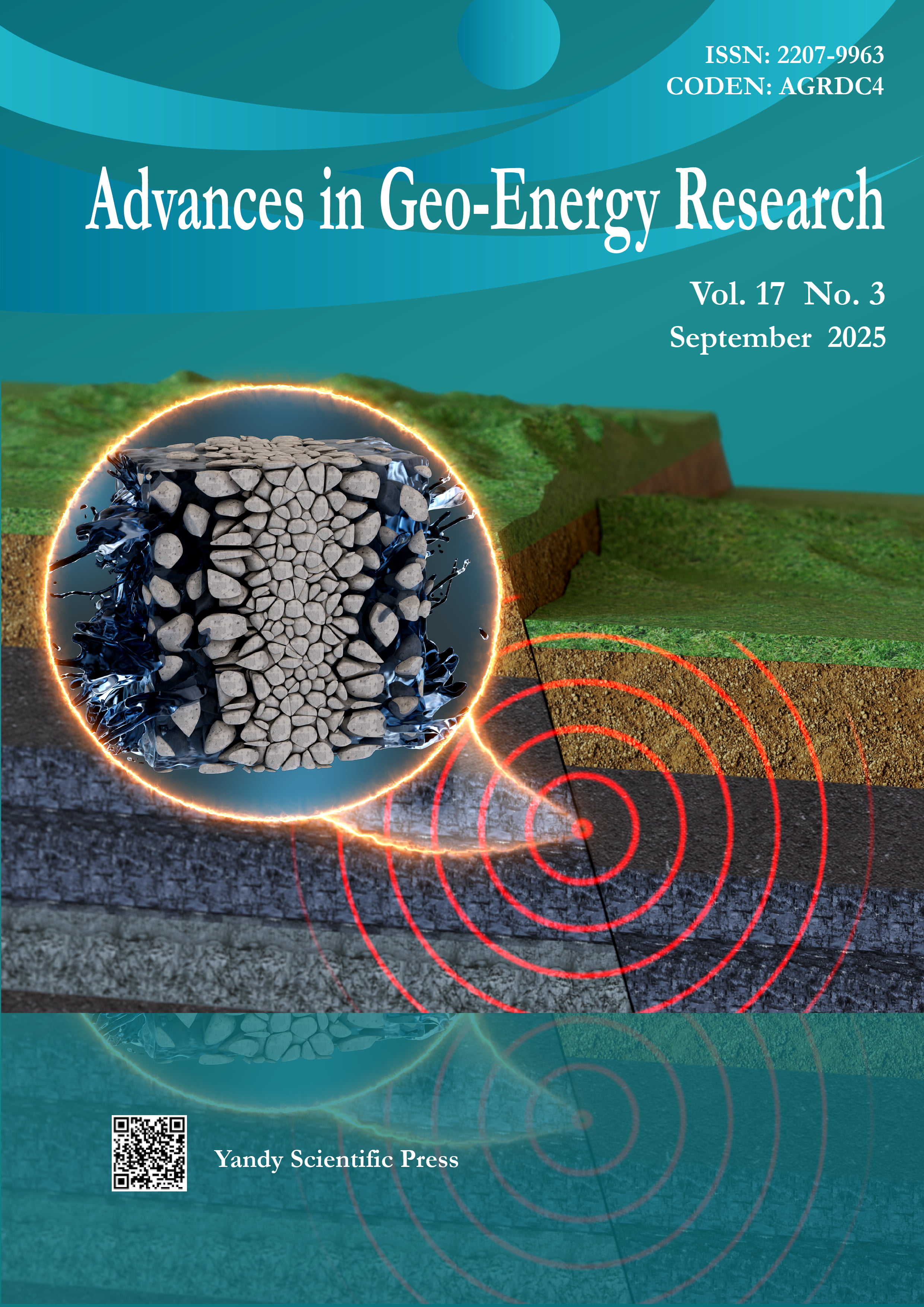Mitigating risks in deep sea gas hydrate production: A new perspective on interpreting thermo-hydro-mechanical feedbacks
Abstract
Natural gas hydrate deposits in marine sediments represent a vast potential energy resource, yet their commercial extraction remains a complex scientific and engineering challenge due to the intricate thermo-hydro-mechanical-chemical coupling processes triggered during production. This perspective paper synthesizes recent progress and outlines persistent hurdles in understanding the coupled mechanical-seepage-thermal response inherent to gas hydrate exploitation, while introducing a novel theoretical and methodological framework that integrates cross-scale constitutive modeling, multiscale permeability upscaling, and nonlinear flow characterization to better interpret key feedback mechanisms. Looking forward, overcoming these barriers requires interdisciplinary approaches leveraging advanced sensing technologies, machine learning-assisted modeling, and novel upscaling methodologies. Furthermore, internationally collaborative long-term field trials with comprehensive monitoring are essential to validate next-generation simulators and develop adaptive management strategies.
Document Type: Perspective
Cited as: Gong, B., Lei, G., Chen, L., Zhao, Y. Mitigating risks in deep sea gas hydrate production: A new perspective on interpreting thermo-hydro-mechanical feedbacks. Advances in Geo-Energy Research, 2025, 17(3): 267-270. https://doi.org/10.46690/ager.2025.09.08
DOI:
https://doi.org/10.46690/ager.2025.09.08Keywords:
Natural gas hydrate, mechanical properties, seepage properties, heat transferReferences
Chen, L., Yu, C., Zhao, M., et al. Conditions and heat absorption capacity of methane hydrate dissociation in argillaceous silt. Acta Petrolei Sinica, 2025, 46(5): 953-966.
Lei, G., Liao, Q., Lin, Q., et al. Stress dependent gas-water relative permeability in gas hydrates: A theoretical model. Advances in Geo-Energy Research, 2020, 4(3): 326-338.
Liu, W., Wu, Z., Li, J., et al. The seepage characteristics of methane hydrate-bearing clayey sediments under various pressure gradients. Energy, 2020, 191: 116507.
Moridis, G. J., Collett, T. S., Boswell, R., et al. Toward production from gas hydrates: Current status, assessment of resources, and simulation-based evaluation of technology and potential. SPE Reservoir Evaluation & Engineering, 2009, 12(5): 745-771.
Waite, W. F., Santamarina, J. C., Cortes, D. D., et al. Physical properties of hydrate-bearing sediments. Reviews of Geophysics, 2009, 47(4): RG4003.
Wu, P., Li, Y., Sun, X., et al. Mechanical characteristics of hydrate-bearing sediment: A review. Energy & Fuels, 2021, 35(2): 1041-1057.
Yao, Y.-P., Liu, L., Luo, T., et al. Unified hardening (uh) model for clays and sands. Computers and Geotechnics, 2019, 110: 326-343.
Yu, C., Sun, B., Hasan, M., et al. Experimental investigation and modeling on the dissociation kinetics of methane hydrate in clayey silt cores in depressurization. Chemical Engineering Journal, 2024, 486: 150325.
Zhao, M., Sun, B., Yu, C., et al. Predicting methane hydrate equilibrium conditions in ethylene glycol and NaCl/KCl/CaCl2 aqueous solutions by water activity measurement. Journal of Chemical & Engineering Data, 2021, 66(11): 4159-4165.
Zhao, Y., Kong, L., Liu, L., et al. Mechanical behaviors of natural gas hydrate-bearing clayey-silty sediments: Experiments and constitutive modeling. Ocean Engineering, 2024, 294: 116791.
Downloads
Downloads
Published
How to Cite
Issue
Section
License
Copyright (c) 2025 Author(s)

This work is licensed under a Creative Commons Attribution-NonCommercial-NoDerivatives 4.0 International License.
